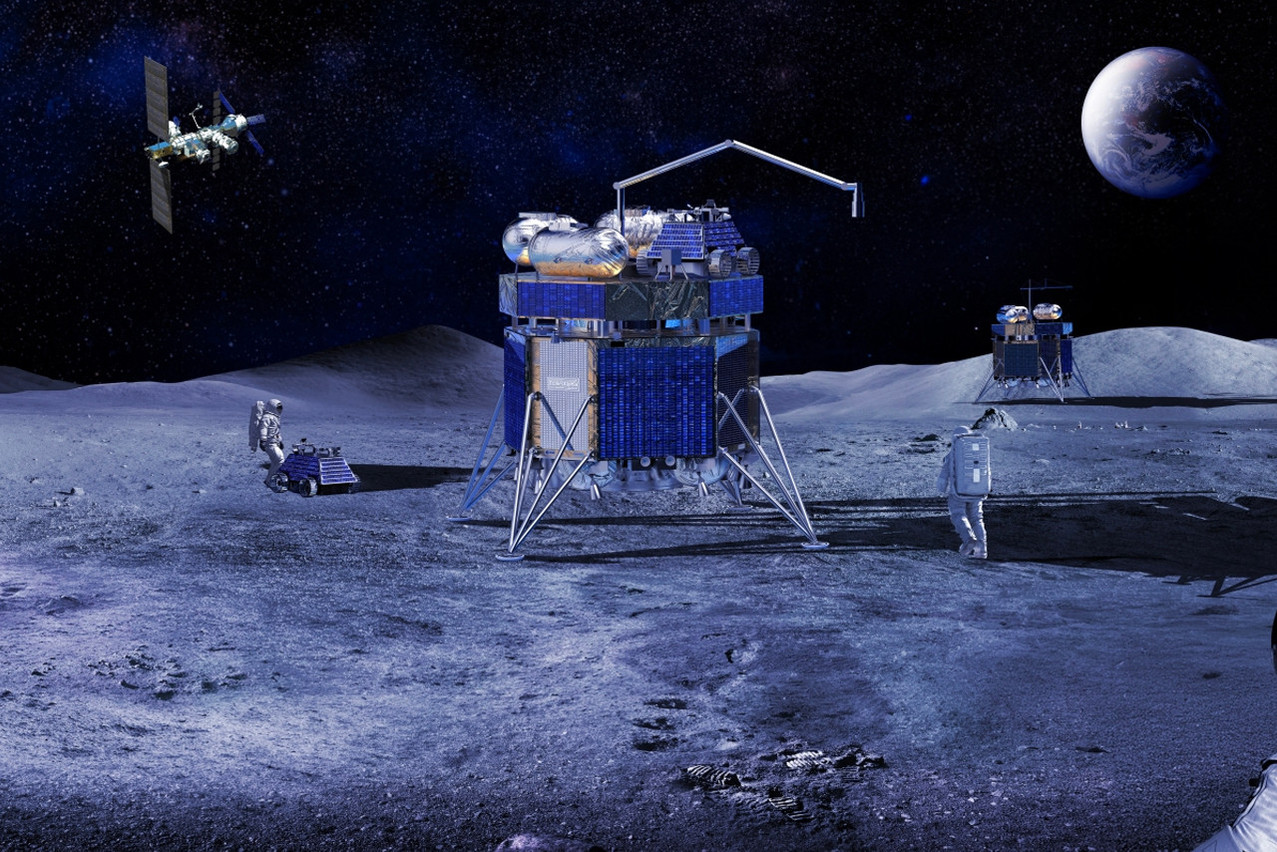Thales Alenia Space, the joint venture formed by the French aerospace and defence corporation Thales (67%) and the Italian aerospace and defence company Leonardo (33%), will design, develop and supply a future lunar lander to the European Space Agency (ESA). Planned to be launched from the 2030s, this autonomous, multi-purpose spacecraft will be designed to transport cargo to the Moon and guarantee Europe independent access.
The Argonaut vehicle will consist of three main elements: a lunar descent element (LDE) for the flight to the Moon and the lunar landing; a cargo platform, which is the interface between the lander and the payload; and, finally, the element that mission designers wish to send to the Moon. It will also include rovers and will be able to accommodate missions of various kinds, including cargo for astronauts, technology demonstrators, a lunar telescope and a power plant. The first mission will carry dedicated navigation and telecommunications payloads, as well as an energy production and storage system to enable European companies to explore the Moon’s south pole.
This new facility is part of Artemis, the space programme led by the American space agency Nasa in partnership with several other agencies, including the ESA and Japan’s Jaxa, which aims to transport astronauts to the moon and prepare for the exploration of Mars in mid-2027.
“This new element of the Artemis programme will serve at facilitating long-duration manned lunar exploration missions and will be crucial to increase European autonomy in lunar exploration,” Thales Alenia Space CEO Hervé Derrey.
Thales Alenia Space also on 28 January that it had been awarded another contract worth €367m with the ESA, this time for the manufacture of an Envision spacecraft designed to explore the planet Venus by 2031.
This article was originally published in .
